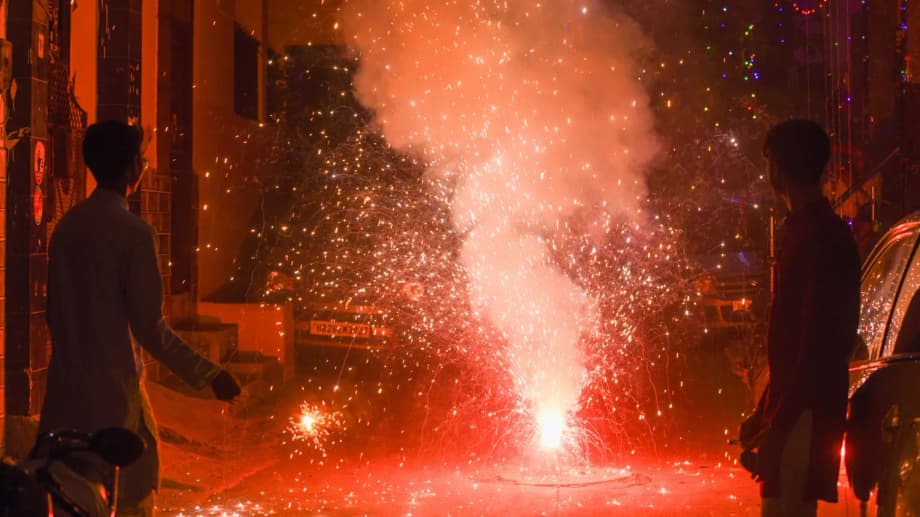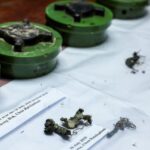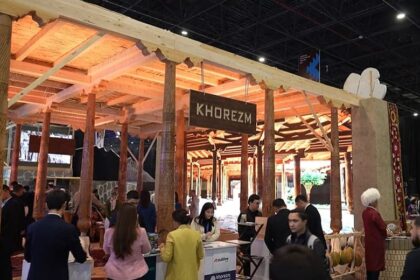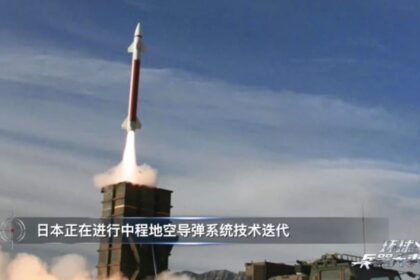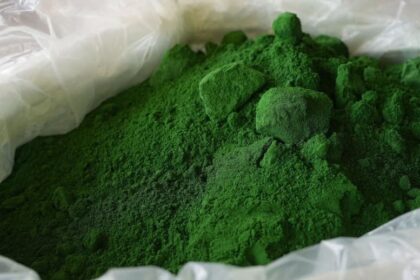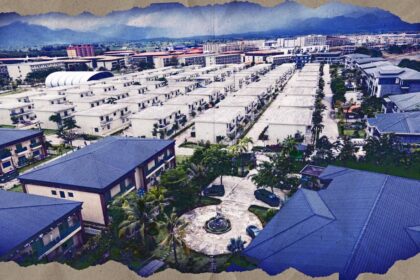A tightly regulated Diwali under a toxic sky
India’s Supreme Court has permitted the sale and limited use of green crackers in Delhi and the National Capital Region during Diwali, setting strict conditions on where, when, and how they can be used. The order arrives in a week when the capital’s air has hovered in very poor to hazardous categories, with PM2.5 readings in many localities far above health guidelines. The court described the relaxation as temporary and experimental, a test to see if a tightly regulated framework can reduce black market fireworks and still protect public health.
Green crackers are designed to release fewer pollutants than conventional fireworks. They use altered chemical formulations, avoid certain toxic compounds, and aim to cut particulate emissions by about a third. Doctors and scientists caution that even cleaner formulations still produce fine and ultrafine particles that penetrate deep into the lungs. Air quality in Delhi often sits at elevated levels before Diwali because of winter weather patterns and multiple pollution sources, so any additional load can push the city into severe or worse air quality categories.
Under the court’s regime, only certified green crackers can be sold and only in designated locations through licensed traders. Sales are allowed for a short period in the days just before the festival, and bursting is allowed only in specific areas during two short windows on the eve of Diwali and on Diwali itself. The total permitted bursting time is three hours split between morning and evening. Firecrackers containing barium are banned, online sales are prohibited, and series or ‘laris’ are not allowed. Products must carry a National Environmental Engineering Research Institute QR code for verification.
A multi agency enforcement plan will back these rules. Police, local administrations, and pollution control officials will run joint patrols, verify QR codes at sale points, collect random samples, and confiscate non compliant stock. Licences of violators can be cancelled and penalties imposed. The Petroleum and Explosives Safety Organisation will conduct surprise checks. To assess the impact, the Central Pollution Control Board and state boards will monitor ambient air quality through the festival period and file reports with the court.
Delhi authorities have also activated the Graded Response Action Plan as winter sets in. Construction dust control, restrictions on diesel generator use for non emergency services, and a ban on coal and firewood for commercial cooking are in place. These steps target the broader mix of sources that drive the city’s winter smog, including vehicle exhaust, construction dust, and smoke from crop residue burning in neighboring states. The court’s limited relaxation sits within this wider effort to keep pollution from spiraling during the festival week.
What exactly is a green cracker
Green crackers emerged after earlier court orders forced a pivot away from conventional fireworks. Researchers linked to the Council of Scientific and Industrial Research and NEERI reengineered standard formulations to cut key pollutants and noise. One target was barium salts, which are effective oxidizers but leave behind toxic residues. Many green formulations remove barium and use alternative oxidizers and additives that suppress dust and release some water vapor during combustion. That combination reduces particulate load and mitigates the thick, lingering smoke many residents associate with Diwali nights.
Common green cracker categories include flower pots, pencils, sparklers, ground chakkar, and single shot aerials with lower emission profiles. Manufacturers claim 30 to 40 percent lower particulate matter and sulfur dioxide, along with lower noise levels. The industry also says newer mixes cut aluminum content and adjust the thermite reaction that produces bright flashes and sound. The aim is to preserve visual effects while curbing the dirtiest fumes.
Lab gains do not always translate into streetside performance. Real world use happens in clusters and often in low wind conditions when smoke pools near the ground. Studies have found that even green fireworks release large volumes of ultrafine particles, which are most harmful because they enter deep into the respiratory tract. Doctors warn that any additional plume can trigger wheezing, chest tightness, or asthma attacks, especially among children, the elderly, and those with cardiac or respiratory disease.
Certification is meant to help buyers and enforcers distinguish cleaner products. Genuine green crackers must carry a NEERI QR code and a logo. Scanning the code can show the name of the manufacturer, the licensing details, and the emissions test report associated with that product. The court has asked enforcement teams to verify codes at sale points and to seize products that lack proper labeling.
Fake or mislabeled stock is a persistent challenge. Authorities have struggled to visually identify true formulations once packaging enters the market. Testing every batch is not practical in a short window, so the court has called for random sampling and spot checks. PESO and local forensic labs support this work, although officials have flagged capacity constraints and delays in chemical analysis. The success of the trial will depend on how quickly and consistently these checks can be carried out in the field.
The courts rulebook for this Diwali
Where and when: green crackers can be burst only in designated open spaces, typically community grounds identified by local authorities. The permitted use windows total three hours split across two periods, from 6 am to 7 am and from 8 pm to 10 pm. These windows apply on the day of Diwali and, in some jurisdictions, on the eve of the festival. Bursting outside these windows, or in congested residential lanes, is not allowed.
Who can sell: only licensed traders registered with NEERI and holding valid PESO permissions can sell certified green crackers. Sales must be offline at temporary kiosks or designated stalls approved by district administrations in consultation with police. Traders receive time bound licences and must return or safely dispose of unsold stock after the festival.
What is banned: barium containing firecrackers, joined series or ‘laris’, and conventional, high emission products remain prohibited. Fireworks purchased online are not allowed. Stock brought in from outside the National Capital Region is banned from sale or use within NCR. Authorities have warned that violations can bring confiscation, fines, and cancellation of licences.
Health costs and why pollution spikes in early winter
PM2.5 refers to particles smaller than 2.5 micrometers. These particles bypass many of the body’s defenses, reaching the deepest parts of the lungs and even entering the bloodstream. Exposure is linked to heart attacks, strokes, aggravated asthma, and adverse pregnancy outcomes. Public health researchers estimate that long term exposure to polluted air shortens the lives of Delhi residents by nearly 12 years compared with a scenario that meets clean air guidelines. A recent global study attributed about 135 million premature deaths to air pollution over the past four decades, with India and China bearing much of that burden.
Each year, Delhi’s air worsens in late autumn and early winter for reasons that go beyond fireworks. Cooler nights and a temperature inversion trap pollutants near the surface. Wind speeds fall, limiting dispersion. Traffic remains heavy, and construction dust rises from work sites and unpaved stretches. In October and November, smoke from crop residue burning in Punjab and Haryana drifts into the capital region. Fireworks then arrive on top of an already loaded atmosphere.
Past Diwali periods show a consistent spike. In one recent year, 24 hour PM2.5 in Delhi reached around 380 micrograms per cubic meter during Diwali, far above even the city’s elevated seasonal average. Last year saw AQI in parts of the city climb to more than ten times the safe limit. Green fireworks, shorter time windows, and designated areas can temper the surge, yet the net effect still depends on weather, background sources, and how well rules are followed on the ground.
For those managing chronic respiratory or heart conditions, even a short spike can trigger symptoms. Hospitals commonly report an uptick in ER visits for breathing difficulties around Diwali night. This is why the court’s order emphasizes limited hours, open spaces for dispersal, and a crackdown on non compliant crackers that add unnecessary burden to the air.
What the judges and officials said
The bench said it had to weigh the reality that a total ban did not halt fireworks, and that smuggling was undermining the objective. Allowing only certified products for narrow windows, under close supervision, could cause less harm than a porous blanket ban that lets high emission fireworks flood the market.
Chief Justice B. R. Gavai, who has heard multiple petitions on firecrackers, framed the national context during an earlier hearing on uneven bans across regions.
‘If firecrackers are to be banned, they should be banned throughout the country. We cannot have a policy only for Delhi.’
Another bench remark from the previous winter reflected the court’s position on faith and public health.
‘No religion promotes any activity that contributes to pollution or compromises the health of people.’
Senior advocate Aparajita Singh, assisting the court as amicus curiae in air pollution matters, urged the bench to consider who bears the heaviest burden of bad air.
‘It is not the elites but the poor that suffer more due to pollution.’
Delhi’s chief minister, Rekha Gupta, said the government would support the court’s plan and work to deliver safe celebrations within the rules.
‘The ruling respects public sentiment while protecting health. We will ensure strict enforcement and cooperate fully with all directions.’
Can a narrow relaxation curb illegal fireworks
States in the National Capital Region argued that permitting green crackers during fixed windows can reduce smuggling and black marketing. Manufacturers say a clear pathway for certified products helps formalize a trade that otherwise shifts underground, where safety and quality controls fall away. Some traders also contend that customers seeking firework experiences will turn to what is available, so offering cleaner options under supervision can limit the harm.
Critics answer that enforcement in Delhi and its suburbs has struggled for years. Fake labels and swapped packaging persist, and it is hard for field teams to spot chemical formulations without lab tests. Delhi’s proximity to multiple state borders complicates interdiction. The court tried to address these concerns by limiting sales to designated sites within NCR, banning stock from outside the region, and calling for random sampling backed by PESO and forensic labs. Officials have acknowledged that testing capacity is finite, which makes rapid, on the spot checks and QR verification essential.
Public health specialists also point to crowding effects. When people burn even cleaner fireworks in the same short window, emissions can concentrate in time and space. That is why the court requires open spaces and policing of hotspots. Whether the trial succeeds will hinge on compliance levels, weather, and background pollution from vehicles, industry, and fires. The air quality reports that boards submit after Diwali will give the court data to decide if a limited relaxation can coexist with a cleaner festival week.
What residents can expect and how to stay safer
Residents should prepare for a short but intense period of smoke and noise, even under the new rules. The court’s plan aims to keep emissions lower and more dispersed than on a free for all night, yet conditions like low wind and temperature inversion can still trap smoke near the ground. Families with young children, older adults, and those with asthma or COPD may prefer to celebrate in well ventilated indoor spaces or attend community events held in designated open areas.
Simple steps can reduce exposure. Plan any outdoor celebrations within the permitted windows and avoid lingering in areas where fireworks are active. Keep windows closed in the evening hours, and consider using an air purifier with a HEPA filter if available. N95 or similar masks offer protection for brief outdoor exposure. Monitor local AQI on official apps or displays, and limit strenuous activity when levels move into very unhealthy categories. Those with inhalers should keep them handy and follow physician advice for action plans.
Residents who buy fireworks can check for the NEERI QR code and avoid stock that appears tampered or lacks labeling. Violations, including fireworks outside permitted hours or in prohibited areas, can be reported to local police or pollution control helplines. Officials have said they will run foot patrols across Delhi, Haryana, Uttar Pradesh, and Rajasthan’s NCR districts to enforce the court’s directions.
Highlights
- Supreme Court allows only NEERI certified green crackers in Delhi NCR for Diwali on a temporary, trial basis.
- Bursting is limited to two daily windows, 6 am to 7 am and 8 pm to 10 pm, on the eve of Diwali and Diwali day, and only in designated areas.
- Sales are offline at designated spots through licensed traders, with QR codes required on every approved product.
- Conventional fireworks, barium containing crackers, series or ‘laris’, online purchases, and stock from outside NCR are banned.
- Joint patrols by police and pollution control officials will verify QR codes, conduct random sampling, and confiscate illegal stock.
- CPCB and state boards will monitor air quality through the festival period and submit reports to the court.
- Delhi has activated GRAP, curbing diesel generators for non emergency use and banning coal and firewood in commercial cooking.
- Doctors warn that even green fireworks emit fine and ultrafine particles that can worsen respiratory and cardiac conditions.
- Manufacturers and traders say a regulated allowance can reduce smuggling and black marketing, while critics question enforcement capacity.
- The court will review post festival data to decide whether a limited relaxation can continue or requires changes.


